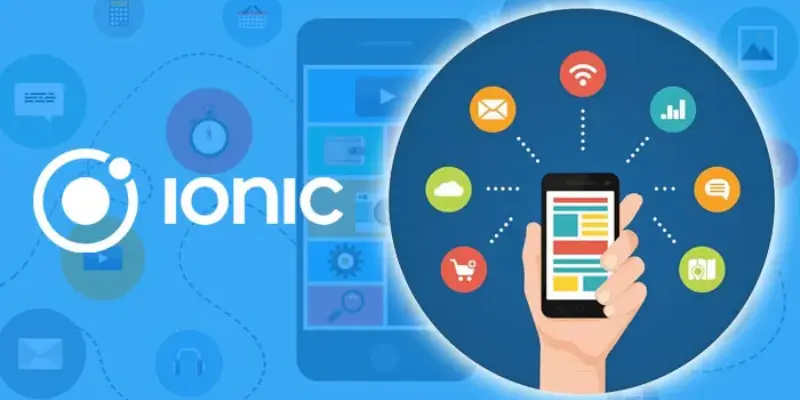In today’s fast-paced digital world, the healthcare industry increasingly relies on technology to deliver better services, manage patient records, and streamline operations. Mobile applications have become essential tools for healthcare providers, and frameworks like Ionic are revolutionizing how these apps are developed. Ionic’s ability to create cross-platform, high-performance apps makes it a go-to for developing healthcare apps. For those seeking expertise in this framework, Ionic Training in Chennai offers comprehensive guidance to harness its potential. This blog will explore how to build high-performance healthcare apps using Ionic, highlighting best practices and key features that ensure success.
Why Choose Ionic for Healthcare Apps?
1. Cross-Platform Compatibility
Ionic allows developers to create apps that run seamlessly on multiple platforms using a single codebase, including iOS, Android, and the web. This capability reduces development time and ensures consistent user experiences across devices—critical in a field where quick accessibility can save lives.
2. Rich UI Components
Healthcare apps often require intuitive and easy-to-navigate interfaces. Ionic’s library of pre-built UI components, such as forms, modals, and menus, simplifies creating visually appealing and functional designs that cater to healthcare providers and patients.
3. Integration-Friendly Framework
Ionic integrates easily with various backend services, APIs, and databases. This is particularly important for healthcare apps that must pull real-time patient data from electronic health records (EHRs) or integrate with third-party health monitoring devices. For developers looking to enhance their skills in managing and analyzing healthcare data, Clinical SAS Training in Chennai provides the expertise required to complement Ionic’s capabilities in building robust healthcare solutions.
Steps to Build High-Performance Healthcare Apps Using Ionic
1. Define Your Objectives and Audience
Start by identifying your app’s core purpose. Are you building a patient monitoring tool, a telemedicine platform, or a health data analytics solution? Understanding your objectives and target audience ensures that the app’s features align with their needs.
2. Focus on Security and Compliance
Healthcare apps handle sensitive patient data, making security a top priority. Leverage Ionic’s integration capabilities to incorporate robust security features such as:
- Data Encryption: Encrypt sensitive data both in transit and at rest.
- Authentication: Use two-factor authentication (2FA) and biometric verification for secure access.
- Compliance: Ensure the app complies with regulations like HIPAA (in the US) or GDPR (in the EU).
3. Optimize Performance with Capacitor
Ionic’s Capacitor allows you to access native device features like the camera, GPS, and sensors without compromising performance. Optimize app speed and responsiveness by using Capacitor plugins for real-time health monitoring or GPS tracking in emergency response applications. For professionals aiming to integrate advanced analytics into healthcare apps, Clinical SAS Training can provide the necessary skills to analyze and manage healthcare data effectively alongside Ionic’s native features.
4. Leverage Real-Time Data with APIs
Integrate APIs to enable real-time data exchange. For instance:
- Use APIs to fetch real-time health metrics from wearable devices.
- Connect with EHR systems for seamless access to patient medical histories.
- Incorporate telemedicine APIs for video consultations and chat features.
Also Read: How Can I Optimize Performance In Ionic Apps Effectively?
5. Prioritize User Experience (UX)
A healthcare app must be user-friendly for both medical professionals and patients. Utilize Ionic’s UI toolkit to:
- Create clear navigation flows.
- Design responsive layouts for both smartphones and tablets.
- Add accessibility features like text-to-speech and scalable fonts.
6. Test and Optimize
Before launching your app, thoroughly test it to ensure high performance. Tools like Ionic Appflow facilitate automated testing and continuous deployment. Focus on:
- Eliminating bugs that could disrupt critical app functionality.
- Optimizing load times for large datasets, such as medical records.
- Stress-testing under heavy usage scenarios, such as during a health crisis.
Also Read: How Can Ionic Help In Creating Progressive Web Apps?
Key Features to Include in Healthcare Apps
Appointment Scheduling and Reminders
Allow users to book appointments with healthcare providers and receive automated reminders, reducing missed consultations.
Telemedicine Integration
Enable remote consultations through secure video calling and chat features.
Real-Time Notifications
Send alerts for medication schedules, lab test results, or critical health updates.
Data Analytics and Reporting
Provide healthcare providers with insightful dashboards for monitoring patient trends and outcomes.
Offline Functionality
Ensure the app works even in areas with poor internet connectivity by leveraging local storage options available in Ionic.
Ionic offers a versatile and powerful framework for building high-performance healthcare apps that are secure, scalable, and user-friendly. By leveraging its cross-platform capabilities, rich UI components, and integration-friendly architecture, developers can create apps that cater to the healthcare industry’s dynamic needs. Whether you’re building a telemedicine platform or a patient monitoring tool, Ionic’s features and best practices pave the way for successful app development. For those seeking to master this technology, an Ionic Online Course provides the flexibility and knowledge needed to excel. Invest in the right approach today to build apps that revolutionize healthcare delivery and improve patient outcomes.
Also Read: Is Ionic A Suitable Framework For Large-scale Enterprise Projects?

